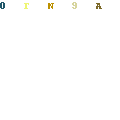http://www.news-journal.com/news/content/news/stories/2009/05/01/05012009_classroom_compare.html
Eunice Morton walked around her desk, grabbing an electronic writing tablet and quickly jabbing it with a stylus.
As the Pine Tree High School science teacher moved her hand, a presentation projected onto her classroom wall came to life. Text appeared, changed color, became underlined and then vanished. Yellow smiley faces appeared next to bullet points, and slides slid across the screen.
"I don't know how to teach without my InterWrite Pad," Morton joked, leaning against a student's desk.
The pad allows her to control the computer presentation as she walks around her classroom. Morton said the technology frees her from standing behind a desk at the front of the classroom, allowing her to interact more with her students. The students also can use the pad to answer online quiz questions and do other activities.
The electronic tablet is one example of how classroom technology has grown by leaps and bounds from even just a few years ago — and many teachers and technology directors believe the changes have improved the teaching field.
Morton said the projected presentations force her to develop focused and concise lessons. The technology helps keep students interested and alert in a course that is heavy on content and traditionally includes a lot of lecturing, she said.
"There's no wasted time in my classroom," Morton said.
Staying relevant
Mike Stanfield, Hallsville Independent School District's director of technology, said the use of technology provides a connection with students who have become accustomed to the everyday use of computers. He said many schools and classrooms continue to follow the 18th-century model of teaching — lining students in rows and lecturing them — even though a more interactive model can be effective with modern students.
"The classroom needs to stay relevant," Stanfield said. "The classroom today needs to at least reflect the state-of-the-art."
He said the district's studies of the effectiveness of some technology in education — specifically iPods and the iPod touch — indicated the multimedia approach improved students' knowledge retention.
Funding obstacles
Despite the apparent benefits, not all school districts can incorporate the same tools for their teachers. While larger districts have the resources to fund technology purchases, smaller schools can face challenges to equip their teachers and students with the latest tools.
Big Sandy Independent School District residents will vote in May on a $6.75 million bond election.
Superintendent Scott Beene said a significant portion of the bond will pay for the construction of computer labs at the district's elementary and secondary schools. Although the district has at least one computer in every room, not all of its students have access to the Internet. He said the district's different campuses share a computer lab.
"That's one of the areas that we are weaker in," Beene said.
Beene said the district is not hurting for technology. He said he believes the district is comparable with other districts of the same size.
The Pine Tree Independent School District has more equipment available in general, but not all campuses have the same access to it. Most classrooms have video projectors, which project an image of whatever is underneath their lens onto a screen, but not every campus has laptop carts and wireless internet, said Jeff Hahne, the district's director of technology.
Online learning
Much of what the Pine Tree district does technologically is actually online. Hahne said the district has created its own version of YouTube, called "ptTube," for teachers and students to use in class or to share videos with the community. Each teacher also has a Web site, and some teachers have begun using district-provided blogs. Teachers also have access to thousands of educational videos through an online subscription service.
"So much of what we do now is Web-based," Hahne said.
Hahne said a few years ago it was a big deal for every classroom to have Internet access, but most teachers now expect Internet access as standard for most school districts. The technology expectations of students also have changed.
"Kids used to be excited about computer classes," Hahne said. "That was their computer fix. Now, kids actually lose some aspects (of technology) at school."
Stanfield said reaching students' expectations in classrooms is the next step for many districts. He predicted incorporating text messages in classrooms could have a great impact on students.
"If we can mimic their culture, we won't have that as a barrier to teaching," Stanfield said.
* * *
Some technology used in local classrooms
Document camera: Overhead projector displays images of objects placed beneath camera lens
Personal response systems: Wireless remotes used to involve students in computer-generated and projected lessons
Laptop carts: Provide wireless laptops to students in classrooms
iPods/iPod touch: Used to display educational content and to create multimedia content
Interactive white boards: Display boards allow teachers and students to interact with projected objects
Source: Area school districts

 2mLearn.mobi
2mLearn.mobi







 Click Here to eMail Questions, Comments & Requests
Click Here to eMail Questions, Comments & Requests








